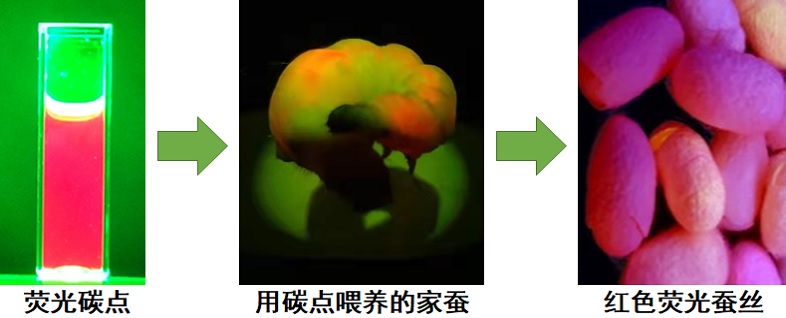Fluorescent silk has promising applications in dazzling textiles, biological engineering, and medical products, but the natural Bombyx mori silk has almost no fluorescence. Here carbon dots (CDs) made from mulberry leaves are reported, which have a strong near-infrared fluorescence with absolute quantum yield of 73% and a full width at half maximum of 20 nm. After feeding with such CDs, silkworms exhibit bright red fluorescence, grow healthily, cocoon normally, and turn to moths finally. The cocoons are pink in daylight and show bright red fluorescence under ultraviolet light. After breaking out of such cocoons, the red-emissive moths can mate and lay fluorescent eggs which would hatch normally. The growth cycle of the second generation of the test silkworm is the same as that of the control group, which means such CDs have excellent biocompatiblility. Dissection and analyses on both the test silkworms and cocoons disclose the metabolic route of the CDs, that is, the fluorescent CDs are absorbed by silkworms from ali mentary canals, then transferred to silk glands, and finally to cocoons, while those unabsorbed CDs are excreted with the feces. All experimental results confirm the excellent biocompatibility and fluorescence stability of such CDs.
https://doi.org/10.1002/adma.202200152

